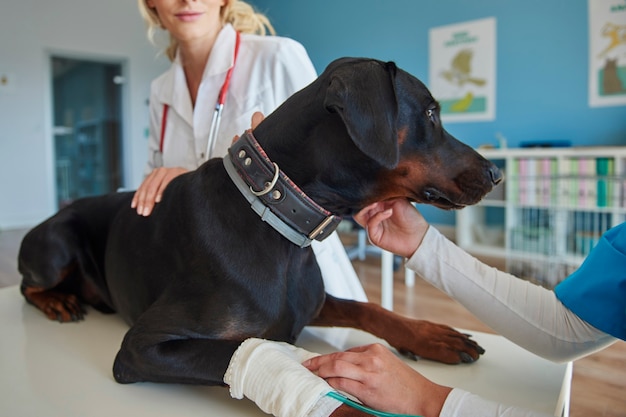Canine Rehabilitation As A Natural Solution For Arthritis Relief


Natural Arthritis Relief for Dogs Through Rehabilitation
As our beloved canine companions age, their health needs evolve, and some mightface the challenges of arthritis. This degenerative joint condition can greatly affect adog’s mobility and overall quality of life. While arthritis can be a formidable foe, there’s a remarkable ally in the form of canine rehabilitation. In this blog post, we’ll explore how canine rehabilitation can provide an effective, non-invasive, and compassionate approach to treating arthritis in dogs.
Canine arthritis, also known as osteoarthritis, is a condition that impacts joints, causing pain, stiffness, and reduced mobility. It often emerges as dogs grow older, but can also result from injuries, genetic factors, or obesity. The gradual breakdown of joint cartilage leads to inflammation and discomfort, affecting our furry friends’ ability to move freely and comfortably.
Canine rehabilitation is a comprehensive approach to treating various conditions, including arthritis, using specialized techniques tailored to the individual needs of each dog. This therapeutic discipline encompasses a range of modalities designed to alleviate pain, enhance joint mobility, and improve overall well-being.
Key Components of Canine Rehabilitation for Arthritis:
- Physical Therapy: Customized exercises and stretches aim to strengthen muscles around affected joints, improve flexibility, and promote better range of motion. This helps dogs regain functionality and comfort in their movements.
- Hydrotherapy: Water-based exercises, including swimming and underwater treadmills, provide low-impact workouts that reduce pressure on joints while building muscle strength.
- Massage and Manual Therapy: Skilled therapists use techniques like massage, joint mobilization, and passive stretching to relieve tension, improve circulation, and reduce pain.
- Laser Therapy: Cold laser treatment helps reduce inflammation and stimulates cell regeneration, providing pain relief and supporting the body’s natural healing processes.
- Weight Management: Maintaining a healthy weight is crucial for arthritic dogs, as excess pounds place additional stress on joints. Rehabilitation professionals provide guidance on proper nutrition and exercise routines.
- Environmental Modifications: Experts offer advice on adapting your dogs living space to better accommodate their needs, such as providing ramps and orthopedic bedding.
Some benefits of rehabilitation for Arthritis include:
- Non-Invasive Approach: Rehabilitation focuses on improving the body’s natural healing processes without relying on medications or invasive procedures.
- Customization: Each dogs condition is unique, and rehabilitation plans are tailored to address their specific needs, ensuring a targeted and effective treatment.
- Pain Relief: Rehabilitation techniques, such as massage, laser therapy, and hydrotherapy, work to alleviate pain and discomfort associated with arthritis.
- Improved Mobility: By enhancing joint function and muscle strength, rehabilitation helps dogs regain their ability to move comfortably and perform daily activities.
- Enhanced Quality of Life: Canine rehabilitation fosters mental and emotional well-being by restoring mobility and enabling dogs to engage in activities they enjoy.
Canine rehabilitation stands as a beacon of hope for dogs grappling with arthritis. Through a combination of holistic techniques, tailored treatments, and compassionate care, dogs can find relief, regain mobility, and enjoy a better quality of life. If you suspect your furry friend is suffering from arthritis, consider consulting a certified rehabilitation specialist and veterinary professional to explore the possibilities of this comprehensive and transformative approach. Together, we can help our beloved companions walk the path of wellness and comfort.




